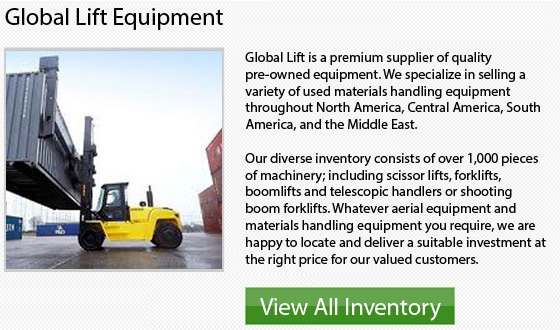
Electric lift truck models make up almost 60 percent of the lift truck market. These units derive their power from huge, heavy lead-acid batteries which which prevents the machinery from tipping over as it gives it the counterweight.
The ITA states that electric counterbalanced trucks are considered Class 1 lift trucks. The category of Class1 also encompasses stand-up counterbalanced forklifts along with other electric trucks that are made for general application. Though the initial investment when you purchase an electric lift truck is more than an internal combustion or IC lift truck, electric lift trucks are less costly to operate and run in the long-run. This is due to lesser fuel and maintenance expenses, than the IC or internal combustion models.
The majority of the electric rider forklift trucks shipped within North America is made for transporting material inside. They are commonly utilized in retail spaces, and warehousing applications. The electric units are the best alternative for inside applications due to their ability to emit zero toxic emissions and make less noise.
Additionally, electric forklift can normally run a complete 8 hour shift on one battery charge. Recharging, reloading and removing batteries, that generally weigh around 3000 lbs. can be time consuming and hard. This burdensome task usually requires a dedicated space for handling the battery. However, new fast charging technologies are being used to update this method and change the procedure to be able to complete it in a a lot faster way.
Fast charging technologies are considered the best charging technologies. It has changed electric model forklifts and the time it takes to charge their batteries. The professionals of the material handling business, state that these new developments within the battery technology and battery charging systems can cut charging time by as much as 50 percent!
IC Counterbalanced Forklifts
The IC powered lift truck would rely on types of fuels, like LPG or liquid propane gas, diesel, CNG or compressed natural gas and gasoline. The bigger lift trucks are normally used outdoors. Normally, these models operate on gas or diesel and uses pneumatic or air-filled tires in order to make them suitable for rough terrain and steep inclines, compared to cushion tires. Cushion tires are better suited for indoor applications and smooth services as they are made from solid rubber.
The most common fuel option for indoor trucks is LPG. There are more than 600,000 propane-filled forklifts nowadays that are operating within DCs and in warehouses. These models offer numerous benefits. For example, forklifts that run on propane fuel maintain 100 percent consistent power during operation. Moreover, these units offer faster ground speeds compared to other power sources.